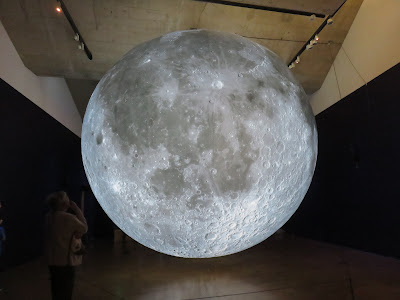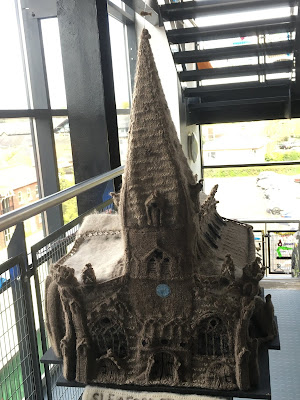 |
| Luke Jerram's 'The Museum of the Moon' |
We also looked around the rest of the museum, which has various Roman and Viking artefacts discovered in the locality, and more up to date exhibits, including a Robot guide , which, in response to opinions chosen form its touch-screen, will lead museum visitors to a particular exhibit and provide information about it.
 |
| Lindsey the Robot |
We also went to the National Centre for Craft and Design, which was, we found, between exhibitions, but did have a small collection of knitted churches, which were rather appealing.
The following day, we went to Gainsborough, to visit Gainsborough Old Hall, a wonderful survival of a medieval manor house
It was built in 1460, and was sold once, in 1596, then remained in the same family until it was given to English Heritage in the 1970s!
It was visited by Richard III in 1483, and later by Henry VIII, (together with his 5th wife, Katherine Howard), in 1541. It also has connection with the Mayflower pilgrims, as the Hickman family, the second to own the hall, included Puritans and was a base for the Separatists, who went on to become the Mayflower pilgrims.
 |
| The Great Hall - Gainsborough Old Hall |
It's a stunning place, and I am surprised it isn't better known.
It was our last touristy outing, but not the last event of stay.
The cottage we rented was very close to RAF Scampton, which is the home of the Red Arrows.
While they clearly had some time off over the Easter weekend, they were back again, and rehearsing their performances, for the final 4 days of our break, which meant that we had a front row seat to watch their displays, from the kitchen window of the cottage.!
I imagine that permanent residents may find them rather noisy neighbours, but as visitors, they certianly added to our trip!




No comments:
Post a Comment